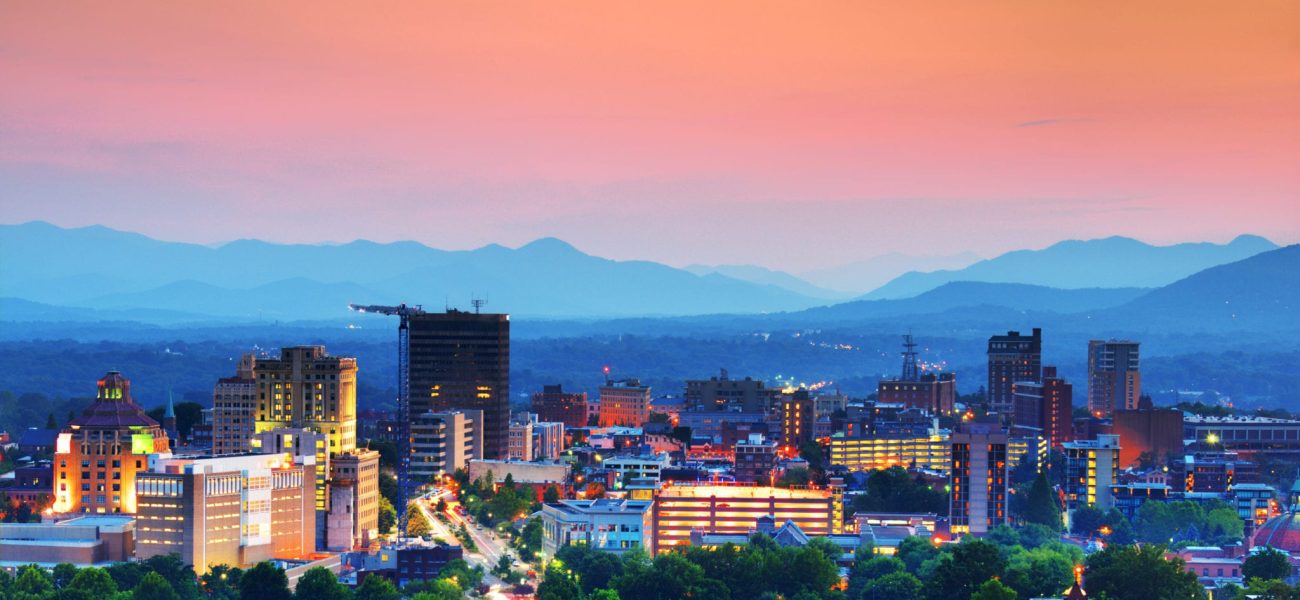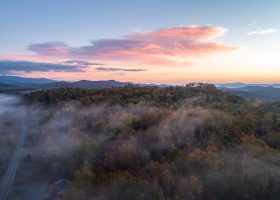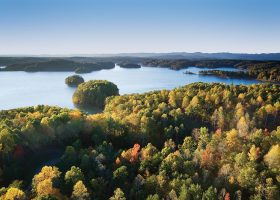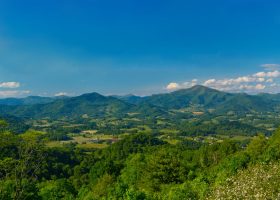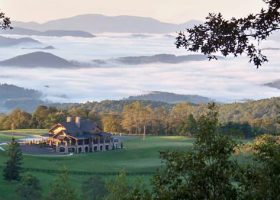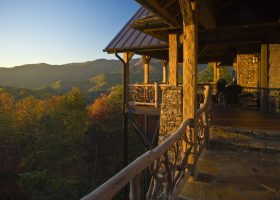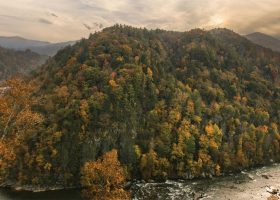By Christina TalcottWashington Post Staff Writer Sunday, August 16, 2009
Battery Park in Asheville. The city draws tourists with its laid-back atmosphere, restaurants and Biltmore estate.
Asheville, N.C., Has a Song at Its Heart
On a warm summer night, I could hear the drums from blocks away. Instead of a steady bum-bum, though, the sounds drifting through Asheville’s downtown core made an exuberant cacophony: the thump-a-thump of hands slapping djembes, the ching-ca-ching of tambourines, the dong-dong of a cowbell and the shuff-a-shuff of shakers, the toc-toc of claves and the broo-roo of a didgeridoo, plus the sound of many hands clapping. It’s all part of the eight-year-old Friday night drum circle that takes place in Pritchard Park, a little landscaped triangle in the middle of this western North Carolina city.
On brick steps and boulders ringing the park sat silver-haired matrons in preppy knits, young Rastafarians in dreadlocks, elderly Asian ladies, bearded white men in dashikis, young kids with their parents and teenagers in flip-flops. In the center of the park, a handful of drummers manned huge kettle drums, and others shared congas or passed around beaded gourds, wooden blocks and bells. Dancers twirled, swayed and bounced in the warm summer breeze.
Just around the corner, a musical duo of another sort was churning out its own melodies, seemingly oblivious to the drumming ricocheting off the art deco, beaux-arts and baroque buildings. On an accordion and a euphonium, two young men played plaintive strains that would have spurred Edith Piaf to break into song.
Down the street, a lone sax player poured out a tune, his open case at his feet. A half-block away, an R&B trio jammed in a doorway, while near museum-filled Pack Square, the city’s main plaza, a dead ringer for Bob Dylan had his accordion at the ready. The layers of music were dizzying — a little something for everyone.
As the drummers filed out of the park after dark, other musicians hauled instruments and amps into bars. At the labyrinthine World Coffee Cafe, the stereo played indie rock in the main room while a group of kids plunking out “Heart and Soul” on a piano segued into a joyful singalong that lasted well into the night.
Most visitors to Asheville, though, aren’t there for the music. Roughly half of the city’s 2 million yearly visitors trek there to see the biggest private home in America, George Vanderbilt’s palatial Biltmore estate.
The 1895 mansion and grounds are a product of the Vanderbilt family’s railroad fortune, George’s insatiable appetite for luxury and an astounding team of planners and visionaries, including architect Richard Morris Hunt and Frederick Law Olmsted, the landscape architect whose design of Central Park in New York was merely practice for his largest (and last) undertaking: transforming a 125,000-acre swath of deforested North Carolina countryside into lush gardens and managed forest, 8,000 acres of which are still Biltmore property.
The house alone — with its 250 rooms, including 34 bedrooms and 43 bathrooms — has four acres of floor space, much of which is open to the public for a hefty admission price. After coughing up $55 for a ticket and paying an extra $10 for the audio tour, I started out in the house’s crowded foyer along with hundreds of other Saturday day-trippers there to ogle Vanderbilt’s ostentatious creation. I was fully prepared to be offended by the sheer wastefulness, the greed, the pomposity of the place.
Then something funny happened: As I toured the house, I started actually liking George, his wife, Edith, and their daughter, Cornelia. I gaped at their Flemish tapestries, Renoirs and Sargents and Whistlers and the library with 10,000 volumes, and I pored over exhibits on the restoration of a suite of rooms just opened to the public this summer.
Meanwhile, the stories emerged: about the youngest son of a robber baron who fell in love with the mountains and built a French-style chateau on a hilltop; about a community of architects, builders and artists who erected that mammoth building; about men and women inspired by Vanderbilt’s vision who, in turn, followed their own dreams. Three years after Biltmore opened, Carl A. Schenck established the country’s first forestry school nearby; after George’s death in 1914, Edith championed local artists and artisans; many craftspeople hired to work on the house decided to stay and make Asheville their home.
Click on the following link to see the complete story
http://www.washingtonpost.com/wp-dyn/content/article/2009/08/14/AR2009081401600.html
